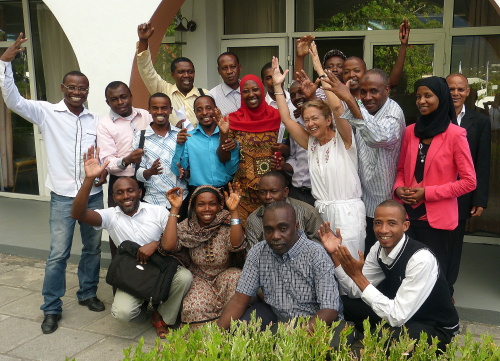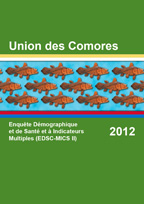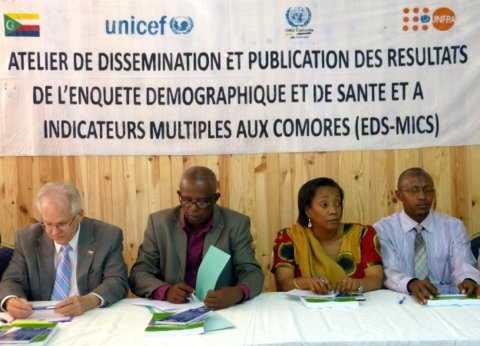Ngonelewa! We are together!
By Mercedes Sayagues
When was the last time you heard about the Comoros islands in the news?
Maybe the Yemenia Air airplane that crashed into the ocean near Moroni, the capital, in 2006? Or the hijacked Ethiopian Airways plane that crash-landed near its airport in 1996? Or the series of mercenary-led coups in the 1990s?
But in this decade, Comoros has been largely peaceful and peaceful countries don’t generally make the news.
While the world may have forgotten about the charming Comoros archipelago located north of Madagascar, the country decided it needed to know more about itself, so it commissioned a Demographic and Health Survey (DHS) – its second ever. The first one dates from 1996 – 18 years ago.
Work on the DHS began in 2012 and the final results were presented at a national seminar in Moroni, the capital, in early June 2014.
Afterwards, I facilitated a two-day training for 17 journalists (print, radio and broadcast) from Ngazidwa, Nzwani and Mwali islands. They were thrilled to have reliable data about their country, their islands, and their communities.
The 2012 survey reveals progress, especially in child health, women’s education and household standards of living. Remarkably, in some areas, like maternal mortality and gender equality in high school, Comoros ranks higher than other countries in the region. There was lots of good humored clapping among the group when they saw those tables.
Among the good news:
- In 1996, 52% of women gave birth with assistance of trained health staff. In 2012, this figured had climbed to 82%.
- Under-five mortality – the likelihood of dying between birth and five years of age – was halved, from 104 deaths per 1,000 live births in 1996 to 50 in 2012.
- Total fertility, the average number of children per woman, declined from 5.1 in 1996 to 4.3 in 2012.
- More than 2 in 3 households have electricity, compared to 3 in 10 in 1996.
- Seven in ten households own a cell phone, 6 in 10 own a TV, and 5 in 10 own a radio.
The downside:
- The proportion of children fully vaccinated rose from 55% in 1996 to 62% in 2012, but is still too low.
- Only 14% of married women age 15-49 use a modern method of contraception. On Mwali island, this number drops to 9%.
- 32% of currently married women have an unmet need for family planning.
- Nearly 4 in 10 women and less than 2 in 10 men agree that wife beating is justified for certain reasons.
- Only about 3 in 10 households use improved (and not shared) toilets.
On the second day of the training, journalists prepared stories for June 16, The Day of the African Child. Working in groups, they selected topics to explore, which included child vaccination, malnutrition, education, and infant mortality.
The group was lively, participative, and showed a sparkling sense of humor. I taught them one very useful word in Shangaan (an African language from Southern Mozambique) and they taught me the equivalent in Comorian. These became our training key words: Hakumana! Ngonelewa! Ok, we are together!
—
Mercedes Sayagues is a journalist, editor, media trainer, former Knight Health Fellow in Mozambique and a consultant for The DHS Program. Born in Uruguay, she has lived in Africa for 22 years and is based in Pretoria, South Africa. She speaks Spanish, English, Portuguese, French, Italian and some Shangaan.






j aurai voulu commenter mais la maîtrise de la langue de communication utiliser fait défaut je veux dire l’anglais pendant que je suis purement francophone
je sus fier que vous publier quelques éléments de l’enquête démographique de notre pays la seule remarque c est la date de crashe de yemenia c est ne pas en 2006 mais c est le 30 juin 2010 merci mercedes